More than half a decade before Chaplin was to ridicule Hitler’s spectacle of charismatic greatness in the Great Dictator, Walter Benjamin already emphasized the strange affinity between the comedian and the politician. Accordingly, Hitler and Chaplin appear as products of the same zeitgeist, yet they chart the tremors of the present on opposite seismographical scales as viewed against the backdrop of Chaplin’s melancholic comedies of submission and rebellion. Hitler and his political aesthetics of extraordinariness emerge as truly farcical, as a bad comedy. Chaplin reveals with every posture that Hitler, not Chaplin, is the greatest, albeit the vilest, imitator and imposter of the age.
In his cinematic fictions, Chaplin tells the truth about the fictions of fascist politics. ”Chaplin brings into view the anachronism of Hitler’s reinvention of aura in the modern age and shows the ways in which fascism processes outmoded concepts of bourgeois art for the purpose of domination. Hitler in turn, must ban Chaplin to protect the decisive principles of fascist domination, the uninhibited transposition of ”l’art pour l’art” into politics, the transfiguration of politics through the metaphors of artistic creativity. For all in all, Chaplin does not only reveal the fact that the fusion of art and power in fascism engenders bad politics, but also that it draws from and reproduces bad art.Hitler must censor Chaplin because the art of the latter unmasks the former’s project of charismatic renewal as poor theater- as fake.”
Chaplin and Hitler promise redemption from the crises of modern life. Chaplin through comical laughter and Hitler through imperial warfare. There is a mutual dependence and desire for destruction. Chaplin’s comedy to eliminate the atrocity of Hitler’s war; Hitler’s war to silence the critical thrust of Chaplin’s satire. They are both negotiating modern struggles around bourgeois art, technology, mass culture, proletarianization, and political charisma. The interaction of body, machine and the animal world and its realizationon in The Dictator cannot be understated, and continued a long running theme in Chaplin’s work. The metaphor of Hitler as an animal and beast is in harmony with Chaplin’s grotesque body language that frequently references the animal world as machine and technological progress; his reflexes often more like Pavlov’s stimulus driven dogs than automatic gears meshing. Chaplin’s body language,and his lack of apparent propriety, relates directly to animal behavior.
”Chaplin’s most thorough exploration of his affinity to animals comes in A Dog’s Life from 1918. The film expresses the Tramp’s affinity with the stray dog, their common struggle for survival and shelter against larger and more powerful beings, often expressed through the similarity of their physical behavior. But most unforgettably in one scene they merge into a single composite body. Chaplin enters a cabaret that does not allow dogs by concealing the pup in the voluminous seat of his pants, making the dog, in effect, a new part of his costume. Chaplin’s pants, as we have seen, form the true seat of the natural man and are capable of receiving extensive borrowings from the outside world. Just as Chaplin’s original character-defining costume consists of a montage of disparate items that somehow form a new, albeit grotesque, being, the addition of a dog to his pant seat generates a new composite character. Through a hole in the seat of his pants, Charlie sprouts a doggie tail, wagging in delirious reflex. The range of associations that this emergence from Chaplin’s pants provokes would be as obvious to Rufus (and the rest of the audience) as to the most sophisticated Freudian critic in pursuit of displacements. While the embarrassment of having something extrude from one’s pants may be a universal experience (or at least a universal fear), ultimately the doggie tail becomes part of Chaplin, his link to his animal nature, and the clear sign of his new composite body. The rhythm of the wag becomes auditory, as Charlie bends to tie his shoe near a large drum and the tail beats a constant tattoo, whose source baffles the drummer, until Charlie reveals the dog and lifts him lovingly from his pants. ( Tom Gunning )
This merging with animal behavior, and its trajectory with Hitler is again, just another side of the coin; each character retains their identity, but creates a new body, part grotesque and part human. The Great Dictator serves as allegory for the biblical story, yet unresolved, of Cain and Abel. Taken from the Beowulf story,the partial animal Grendel is a type of Hitler, who kills and eats other people. He is in pursuit by Abel and Grendel dies in a cave from his wounds in the fashion Hitler died in an underground cave, his bunker. Grendel is vaguely human in shape, with an ambiguous distinction between man and beast; and when his torn arm is inspected it is covered in scales and horny growths.
In John Gardner’s ”Grendel” a differing perspective of Grendel is undertaken. Grendel is emotionally frozen, alienated and disconnected. A psychopath with a complex relationship with the humans who hate and fear him. Grendel feels somehow related to humanity and despite his urges to kill and devour, he can be moved by them and their works. His contempt for the humans stems from the fact that despite the fact that they are unable to hurt him, they fear him because of it, but remain defiant in a cowardly way and egotistical in their relationship to him.
Chaplin’s pantomime, gestures, facial expressions, the entirety of his body art, delivers to us a renewed sense of corporeal experience. His performance remains profoundly rooted in our bodily experience, undermining years of socialization and bodily control, gaining an atavistic intensity by reversing the upward arc of man’s evolution and reminding of our affinities with animals and even plants….As Sergei Eisenstein recognized, in spite of his limited use of editing, Chaplin’s performance, costume and character embodied the logic of montage. We could translate this insight to say that, Chaplin, through his body language, taught the principle syntax of modernity to the world at large.
The last analogy between the two antagonists in The Great Dictator touches on the subject of gender. Both the politician and the comedian, in part, understood the act of reception as an integral part of their overall aesthetic. Chaplin, with his promise of happiness appealed to a romantic notion of art as individual self expression as well as a post bourgeois conception of democratic popular art. Both of their charisma’s are ground in a feminization of their male bodies and less so in imageries of phallic strength and authority. For Hitler, this underscored the perversity of his politics as well as his relationship and perversions towards women. Chaplin’s female elements bear witness to the inscriptions of poverty and social alienation on the body, thus authenticating his rebellious desire for redemption.
The message that Chaplin effectively conveyed in The Great Dictator was the inherent tendency of fascism to solicit a desire for the repression of desire. Intrinsically totalitarian but also , by implication, as a precarious violation of heterosexual normalcy; an aesthetic in the political sphere that denies autonomous forms of sense perception and a negation of the individual body as a site of desire and spontaneity. There is also the concept of war as a vitalistic spectacle of national rebirth, yet in order to do so, it presents war’s means of destruction as autonomous forces that rage according to their own will and logic. Hitler, in the film is a powerless caricature.
The fascist ideologies of war depict advanced technologies of mass destruction, not in terms of heir effectiveness, but rather of their beauty. War is not supposed to be useful, it is first and foremost supposed to be beautiful in an aesthetic sense. And beautiful, by definition, is that which has no function, that which serves no purpose. Chaplin became the greatest comedian, in large measure, because he incorporated these deep horrors and contradictions into his work.


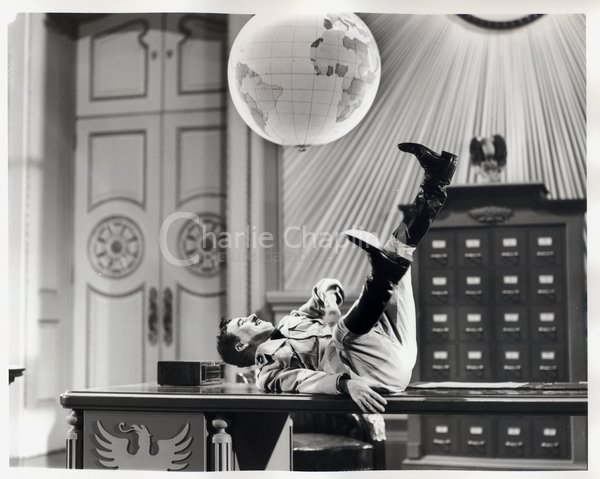
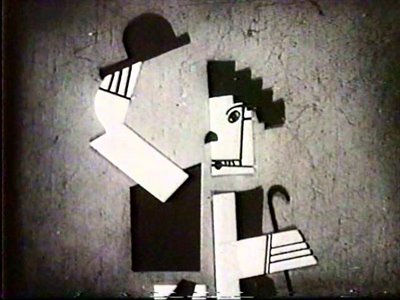
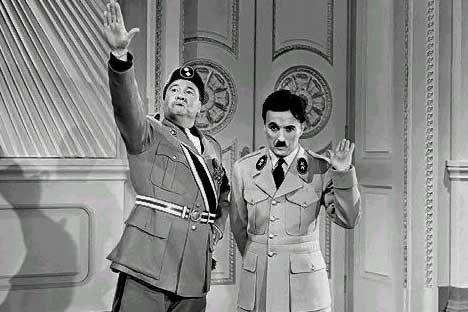
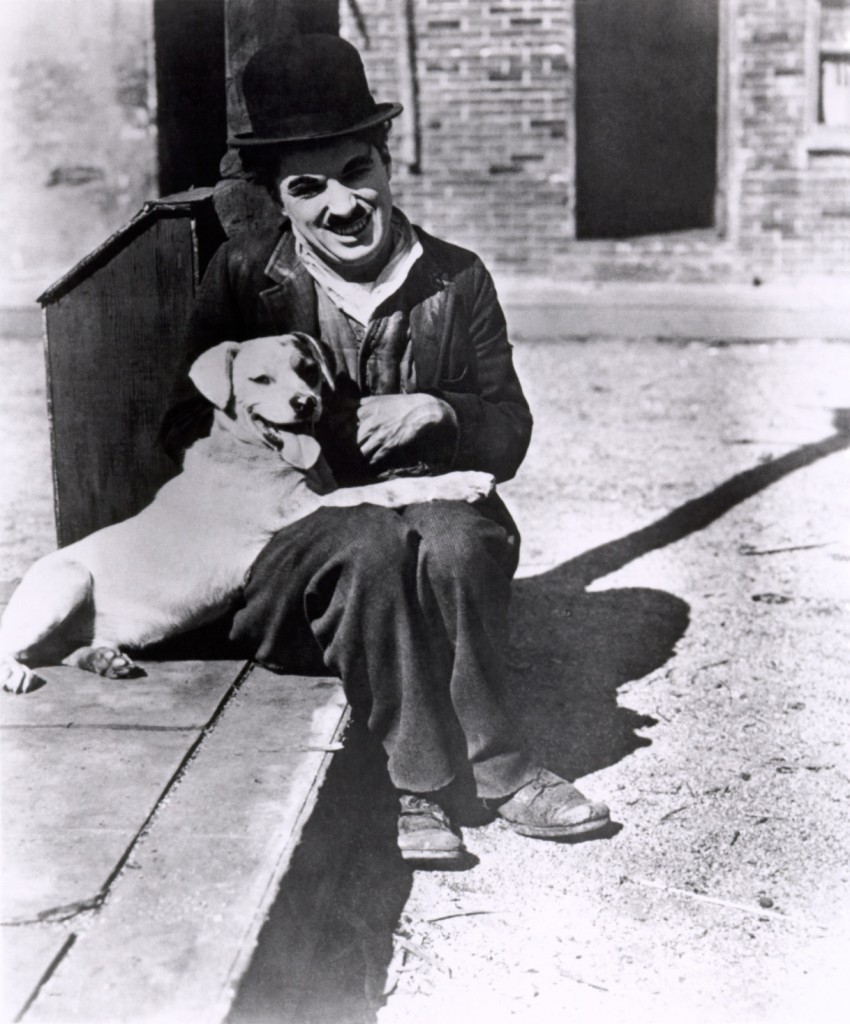
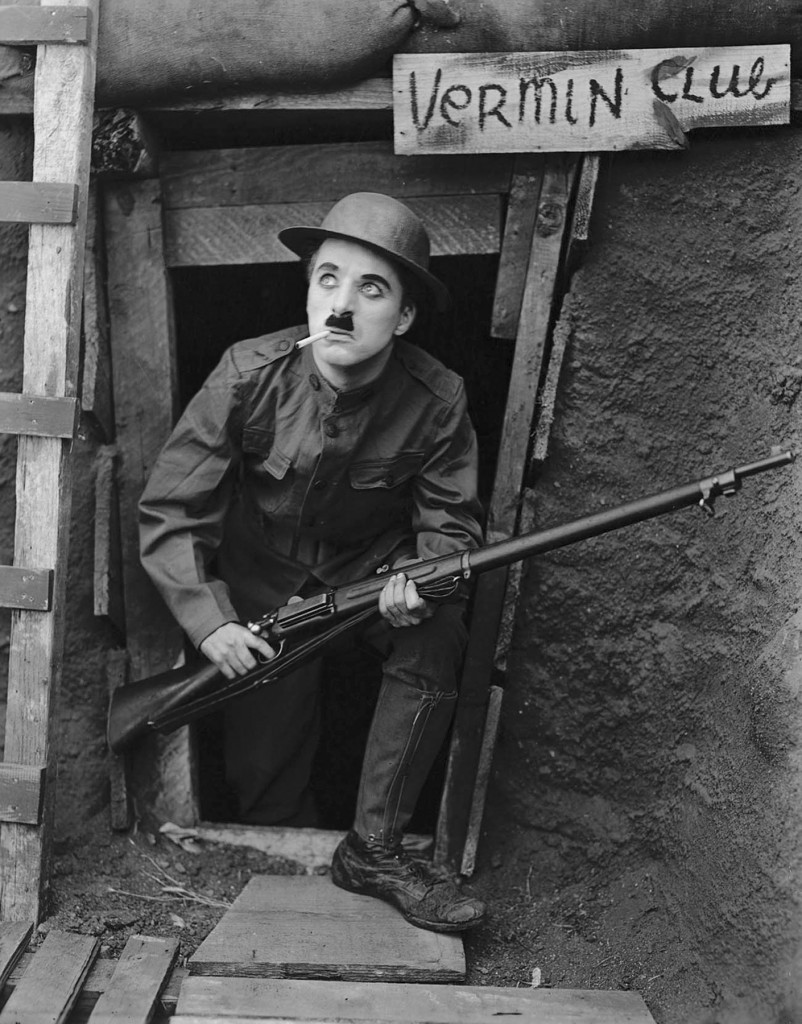
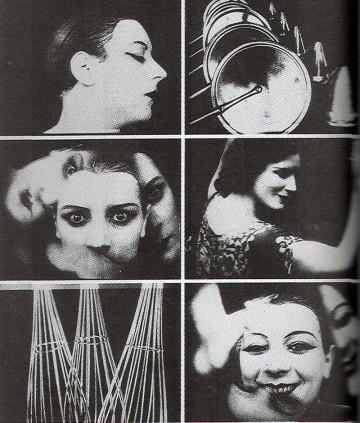
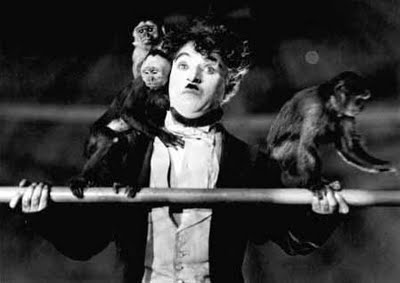
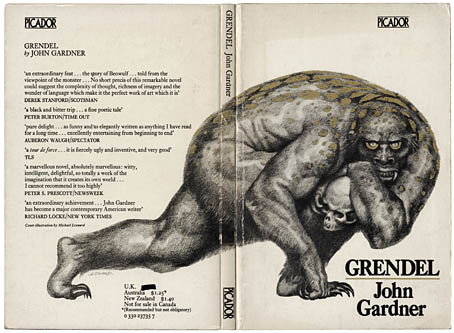





 COMMENTS
COMMENTS




“The message that Chaplin effectively conveyed in The Great Dictator was the inherent tendency of fascism to solicit a desire for the repression of desire.”
“Intrinsically totalitarian but also , by implication, as a precarious violation of heterosexual normalcy; an aesthetic in the political sphere that denies autonomous forms of sense perception and a negation of the individual body as a site of desire and spontaneity.”
If fascism solicits a desire for repression of desire do you specifically mean hetero desire? And when you speak of the individual body as a site for desire and spontaneity are you in the neighborhood of Deleuze and Guattari, ie any desire that might avow the body as a site?
I am somehow increasing lost and confused here,
mason
Actually its a line of thinking somewhat like Walter Benjamin and Jean Epstein and I have to admit, the expression of the thought could have been more elaborate and is linked to the ”femininity” of both. I read something about Deleuze and Guattari on Chaplin. There is a complementary blog on Nonsensegrandcentral.com which I will complete, or make it longer; I,ll explain better the thinking regarding repression on that. hopefully within a day or two and hopefully the D&G analysis will make things clearer for me as well.
Do continue. I am on the fence about femininity as it merges with Essentialist thinking. But i tend to value some observations made by folks like Luce Irgaray, specifically “This Sex Which Is Not One 1977, (Eng. trans. 1985)” I should read some of her recent work, but don’t know any folks who value work from Essentialist perspectives who might advise me. Apparently, there is an anti Essentialist school now as well but i haven’t meet an anti E. who’s read Irgaray to advise me on exploring the? an? “Other Side.”
Your remarks here really help me with Chaplin/Benjamin and the proliferation of Media. You dwell on Art. Having come from structuralism with a dash of deconstruction i should be able to adopt a neutral stance regarding all productions, but increasingly i find myself unable. Hence my appreciation for your style and abilities.
Hi Mason, what often begins as a rather straightforward column, sometimes takes detours into uncharted waters. The terminology you use is not something I am overly familiar with. My background is business, MBA, and there is a lack of nimbleness on my behalf in the high strata of intellectual concepts. However awkward the attempt might be, it is necessary that an effort is made to associate what may appear to be ”simple” onto a broader intellectual basis; despite a definite lack of schooling on my behalf. Its an intuitive grasp,driven to no small degree by curiosity, and to be honest is a bit trial and error, hit and miss and scattershot. Nonetheless, I can see how large corporations do utilize many academic concepts which toes tend to confirm something I was taught that higher education is, to a greater or lesser degree, a form of tax payer subsidy to corporations.
Dave
I think you got that right! I love your Method and Discipline and your Modesty. Eager to experience your next pieces. I’m working forwards as you go and backwards into your archives. Not very scattershot to my mind. Note to self: Gotta look up Jean Epstein
-mason